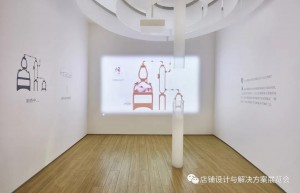ഒക്ട് . 30, 2024 18:31 Back to list
store design
The Art of Store Design Creating Engaging Retail Experiences
In today’s competitive retail landscape, store design plays a crucial role in attracting customers and enhancing their shopping experience. Beyond simply displaying products, effective store design immerses shoppers in a unique environment that reflects the brand’s identity and values. This article explores the key elements of store design and its impact on consumer behavior.
One of the primary goals of store design is to create an inviting atmosphere. Elements such as layout, color schemes, lighting, and materials contribute significantly to this ambiance. For instance, an open floor plan can encourage exploration, while well-chosen colors can evoke specific emotions. Warm tones may foster feelings of comfort and safety, making customers more likely to linger. Additionally, strategic lighting can highlight products, guiding shoppers’ attention to key items or promotions.
An effective layout is another critical aspect of store design. It should promote a natural flow of foot traffic, leading customers through the space in a way that feels effortless. Common layout types include grid, racetrack, and free-form designs, each serving different retail objectives. For instance, grid layouts are often used in grocery stores to maximize product visibility and accessibility. In contrast, a boutique might benefit from a free-form layout, allowing a more intimate and curated shopping experience.
store design

Technology also plays an increasingly important role in modern store design. Incorporating digital elements, such as interactive displays and virtual reality experiences, can captivate customers and keep them engaged. Moreover, the integration of mobile technology, like apps that enhance in-store navigation and offer personalized promotions, can significantly improve customer satisfaction. As retail moves towards a more omnichannel approach, blending physical and digital experiences becomes vital for success.
Branding should also be at the forefront of every store design decision. Every element, from signage to fixtures, should align with the brand’s message and ethos. This cohesiveness helps build brand recognition and loyalty. For example, a luxury store might utilize high-end materials and minimalist design to convey exclusivity, while a playful toy store might embrace bright colors and whimsical decor to create a fun atmosphere.
Moreover, sustainability is becoming a key consideration in store design. Many consumers today are increasingly conscious of their environmental impact and prefer shopping at brands that prioritize sustainability. Utilizing eco-friendly materials, energy-efficient lighting, and sustainable practices in the layout and design process can attract these conscious consumers and position the brand as a responsible choice in the marketplace.
In conclusion, store design is a fundamental aspect of the retail experience that extends far beyond aesthetics. By carefully considering layout, atmosphere, technology, branding, and sustainability, retailers can create an engaging environment that resonates with consumers. As the retail landscape continues to evolve, thoughtful store design will remain a powerful tool for attracting and retaining customers in a dynamic marketplace. Embracing these elements will not only enhance customer experience but also contribute to a brand’s long-term success.
-
The Benefits of Electronic Shelf Labels for Modern Stores
NewsJul.01,2025
-
Space-Saving Retail Store Furniture Designs for Small Shops
NewsJul.01,2025
-
Slatwall vs. Gridwall: Which Store Fixture is Right for Your Business?
NewsJul.01,2025
-
Shop Fittings: Essential Elements for a Functional Retail Space
NewsJul.01,2025
-
How to Design a Minimalist Cosmetic Shop Display
NewsJul.01,2025
-
Creative Clothes Shop Display Ideas to Attract More Customers
NewsJul.01,2025


















































































































